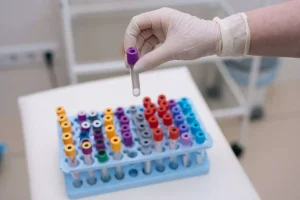
Our writers include physicians, pharmacists, and registered nurses with firsthand clinical experience. All condition, treatment and wellness content is medically reviewed by at least one medical professional ensuring the most accurate information possible. If your doctor confirms a diagnosis of alcoholic neuropathy, they will discuss treatment options, including help for alcohol use disorder. The primary risk factor for alcoholic neuropathy is chronic consumption of large amounts of alcohol. This article provides an overview of alcoholic neuropathy, including symptoms, causes, and diagnosis.
How we reviewed this article:
The prevalence of alcoholic cardiomyopathy appears to be similar among males and females; however, males present a higher disease burden [132, 133]. Furthermore, females tend to be more vulnerable to the brain damage and neurotoxic effects of alcohol [134]. Computed tomography (CT) scans showed that among alcohol-dependent patients, the brain volumes were reduced to increase the volume of cerebrospinal fluid; these changes were induced in females in less time [135, 136]. The mouse model of the injection of β-estradiol in males resulted in higher activity of cytosolic alcohol dehydrogenase (ADH), microsomal aniline hydroxylase (ANH), and aldehyde dehydrogenase (ALDH) which are crucial in ethanol metabolism [138].
Risk factors
Medical News Today publishes that medical procedures and therapies, medications, and adjunctive and alternative therapies are commonly used to treat alcoholic polyneuropathy. To diagnose alcoholic neuropathy, medical professionals will generally perform a few tests or exams to determine the severity of the disorder and what can be done to treat and manage the symptoms. A review of the human literature implicates nutritional deficiencies, most often thiamine deficiency, that are common in alcoholic patients, as commonly accompanying complicating factors in the development of this neuropathy.

Treatment & Therapy
- We do not know precisely how many people are affected by alcohol neuropathy, but research has shown that at least 66% of chronic alcohol abusers may have some form of neuropathy.
- Alcohol abuse contributes to peripheral neuropathy development involving both somatic and autonomic nerves [154, 155].
- Others may be able to stop drinking with outpatient therapy or social support.
The damage may affect the autonomic nerves (those that regulate internal body functions) and the nerves that control movement and sensation. For the most part this review consists of non-interventional studies for which generally accepted tools to evaluate risk of bias are not available. To assess the bias in these we applied the Jadad score which takes into consideration quality of randomisation and blinding as well as reporting of withdrawals to assess bias in RCTs [9]. All RCTs that were included As well as this, where interventional studies are cited a clear description of their design is in text to allow the reader to evaluate that articles risk of bias. Uniquely, Vittadini and colleagues found a relationship between the type of alcohol consumed and neuropathy. Specifically, the study demonstrated worse NCS study dysfunction amongst wine drinkers, than those who drank beer or spirits alone [6].
Injection of (S)-2,6-diamino-N-[[1-(oxotridecyl)-2-piperidinyl]methyl] hexanamide dihydrochloride (NPC15437), a selective PKC inhibitor, once a day for a week after 4 weeks of ethanol treatment. Moreover, phosphorylated PKC was significantly increased in the spinal cord following chronic ethanol consumption. These findings constitute direct evidence that spinal PKC plays a substantial role in the development and maintenance of an ethanol-dependent alcohol neuropathy neuropathic pain-like state in rats. Females, generally tend to drink less alcohol, are better abstainers, and present the smaller probability of the development of alcohol-related diseases [127, 128]. However, compared to males, the symptoms of excessive alcohol consumption manifest earlier in females [129, 130]. Alcohol-related liver cirrhosis may occur even a few years earlier in females compared to males [131].
Benfotiamine was found to be beneficial in patients with alcoholic polyneuropathy [98]. Alcoholic polyneuropathy is a neurological disorder in which peripheral nerves throughout the body malfunction simultaneously. It is defined by axonal degeneration in neurons of both the sensory and motor systems and initially occurs at the distal ends of the longest axons in the body. This nerve damage causes an individual to experience pain and motor weakness, first in the feet and hands and then progressing centrally.

Alcoholic Neuropathy: Symptoms, Causes, Treatments
It also discusses treatment options, including how to get help for alcohol use disorder. Medication can help reduce some of the symptoms of alcoholic neuropathy. The most important strategy against alcoholic neuropathy lies in preventing the symptoms from getting worse by decreasing alcohol consumption as soon as possible. Since nutritional deficiencies are partly to blame for alcoholic neuropathy.
The clinical characteristics of CIPN include paresthesia (tingling, burning sensation), hyperalgesia (sensitivity to noxious stimulation), allodynia (pain induced by normal innocuous stimulation), and decreased physical activity [5, 6]. This may cause patients to receive reduced doses with decreased treatment efficacy or withdraw from chemotherapy. Notably, the severity of CIPN symptoms depends on drugs, doses, treatment period, and other comorbidities, such as diabetes, prior exposure to neurotoxic agents, and alcohol exposure [7]. While CIPN does not cause death directly, it causes important distress in the daily life of patients due to sensory and motor disorders and lowers their quality of life (QoL) [8, 9].
Medical Issues/Complications
It was proposed that ALN pathogenesis, besides thiamine deficiency itself, could be due to its inappropriate use in the organism or transketolase deficiency [150]. Further, alcohol impairs vitamin B1 absorption and its storage in the liver [151,152,153]. The primary aim of this systematic review was to establish the prevalence, character, and risk factors of peripheral neuropathy amongst chronic alcohol abusers and to identify the most appropriate management strategies. A systematic, computer-based search was conducted using the PubMed database. 87 articles were included in this review, 29 case–control studies, 52 prospective/retrospective cohort studies and 2 randomised control trials, 1 cross sectional study, and 3 population-based studies. The prevalence of peripheral neuropathy amongst chronic alcohol abusers is 46.3% (CI 35.7– 57.3%) when confirmed via nerve conduction studies.

Symptoms of peripheral neuropathy include:

You might look for a support group specifically for alcoholic neuropathy or for people coping with chronic pain. You may also benefit from a support group to help you reduce your drinking or completely quit drinking alcohol. While peripheral neuropathy generally cannot be cured, there are several medical treatments that can be used to manage the pain of alcoholic neuropathy, aiding in your recovery. The diagnosis of alcoholic neuropathy involves a combination of medical history, physical examination, and possibly blood tests or nerve tests such as electromyography (EMG) and nerve conduction studies (NCV). Alcoholic neuropathy is caused by nutritional deficiency, as well as toxins that build up in the body.

